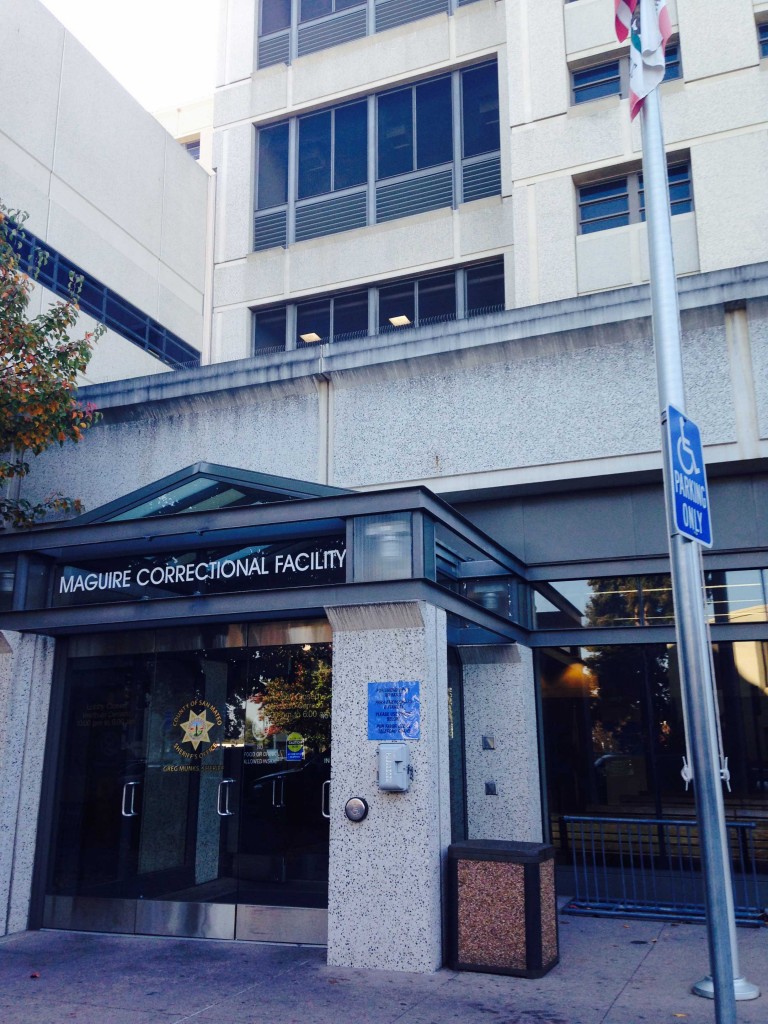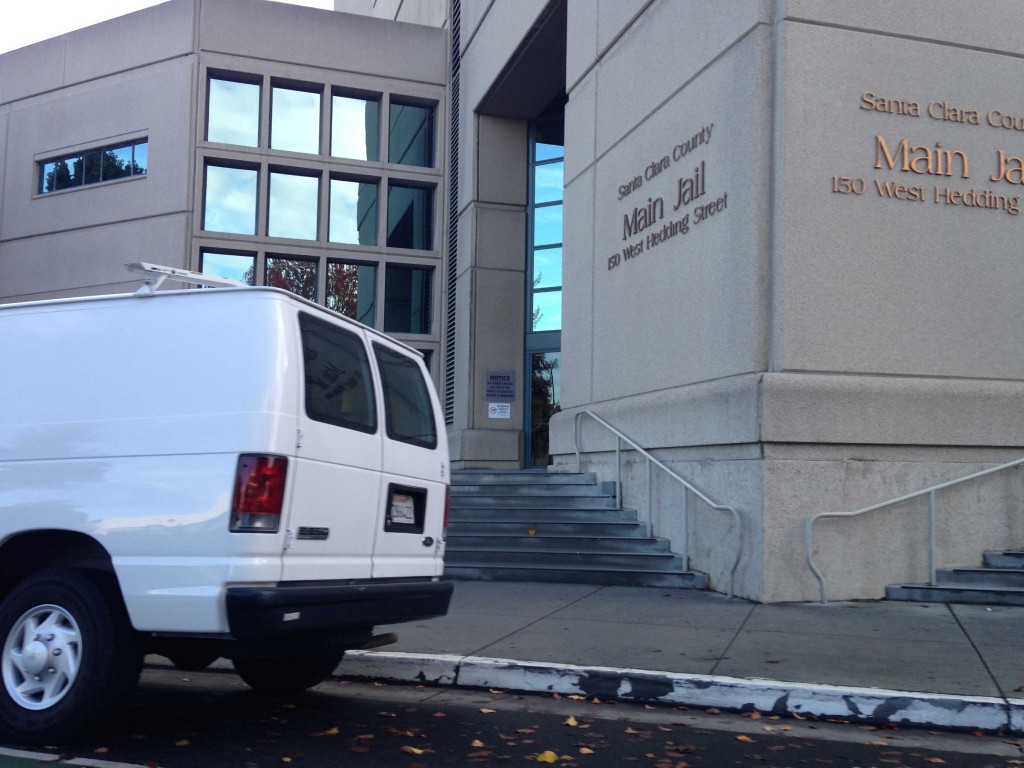Prosecutors and public defenders across the region have been scrambling to identify prisoners eligible for release, after the drug possession and nonviolent property crimes for which they were convicted were reduced from felonies to the lesser category of misdemeanors with the passage of Proposition 47 in November.
The highest priority is to free inmates eligible for release, according to Assistant District Attorney Morley Pitt, the San Mateo County prosecutor in charge of processing release petitions.
But the legal system is also being flooded with petitions for record clearances from a second group — former inmates who have already served their time for offenses that are no longer classified as felonies under the retroactive initiative. Having a felony conviction on one’s record even after release can prevent a person from voting, receiving student loans, getting licensed, finding a job and receiving government housing assistance.
Inadequate data leads to ad hoc procedures
One of the difficulties in implementing Proposition 47 has been the lack of a searchable database to identify the estimated 4,800 inmates in state prisons and thousands more in county facilities who qualify for immediate release.
The San Mateo County Superior Court has released 127 inmates since Nov. 5 and reduced felony convictions of 283 others. It has designated what have come to be known as “Freedom Fridays” to process petitions for release.

Before the initiative passed, the California Department of Corrections and Rehabilitation had no reason to classify inmates according to the criteria Proposition 47 established for sentence reduction — theft of property worth less than $950 and simple drug possession.
So courts have implemented largely ad hoc procedures to identify who gets what prosecutors call a “get out of jail free card.”
To identify potential beneficiaries of Proposition 47 in Santa Clara County, the public defender’s office has engaged in community outreach — creating a prisoner hotline for current inmates and going to places like The Jungle, before the San Jose homeless encampment was dismantled in early December, to hand out flyers to former prisoners and family members, said Fatima Ortiz, a county deputy public defender.
Prosecutors are largely relying on defense attorneys to contact the district attorney’s office to request a sentence reduction for specific defendants.
Private attorneys like Steve Teich in San Jose directly contact prisoners by letter to “let them know that they could get out of jail.” Phone contacts or emails are not feasible, as electronic devices like cell phones are prohibited in prison and computer access is highly restricted. Laura Torres, a criminal defense attorney, fingers through a file cabinet of cases searching for convicted clients who could be eligible for a sentence reduction.
The prosecutors in San Mateo County also informally review each case that comes up on the court’s calendar on unrelated issues like probation violations to see if the defendant happens to qualify for Proposition 47 relief.
“Any time I see on the calendar somebody … who may qualify, we raise it to the court,” said Pitt, the San Mateo County prosecutor.
Kafkaesque outcomes
These impromptu screenings have occasionally resulted in episodes bordering on the Kafkaesque. In a recent court hearing, a woman facing substantial prison time for a parole violation unexpectedly had her original conviction for cocaine possession reduced to a misdemeanor. So instead of being sent back to jail, she was released.
In Santa Clara County, inmates now look forward to “Thank God It’s Monday” — the day when petitions for release are ruled on by Superior Court Judge Linda Clark.
A recent case in her courtroom demonstrates the dramatic impact that Proposition 47 will have on people’s lives. A repeat drug offender being sentenced for possessing methamphetamine was facing 10 years in prison before its passage, according to Teich. But on Nov. 24, his crime was reduced to a misdemeanor, and he was released.
Many inmates who are aware of the measure still tend to be surprised by “the scale of the relief” when they are set free, said Brandon Douglass, who serves on San Mateo County’s defender panel — the group of private attorneys hired by the county to defend indigent defendants in criminal cases.
“The benefit of this law cannot be overstated,” Douglass said, lauding Proposition 47’s emphasis on allowing “people … to get treatment for their problems instead of prison.”
However, Pitt was skeptical Proposition 47 would lead to more seeking drug treatment, noting that the initiative strips courts of “leverage” to require it. Eighty percent of the prisoners who have been released so far in San Mateo County are drug offenders. Previously, judges encouraged such defendants to enter treatment programs by offering to remove the felony convictions that will now be cleared by Proposition 47.
Alleviating prison overcrowding
Yet sending nonviolent drug offenders to California’s overcrowded prisons has not resulted in treatment. Noting that California’s prisons were operating at twice their capacity and that waits for drug treatment could exceed 12 months, Supreme Court Justice Anthony Kennedy, writing in Brown v. Plata, found prison conditions far “below the standard of decency.”
Kennedy — a Stanford graduate and the only native Californian and former Santa Clara County resident on the U.S. Supreme Court — ordered California to reduce its prison population to 137.5 percent of design capacity by 2016, which at the time of the order would have amounted to 110,000 inmates.
To help alleviate the overcrowding and comply with the court order, San Francisco District Attorney George Gascón co-sponsored the Proposition 47 initiative with financial backing from the American Civil Liberties Union.
Statewide prison statistics show that the passage of Proposition 47 may enable California to meet the court’s deadline ahead of schedule by releasing 5,000 to 8,000 inmates.
A fresh start for former inmates
The second major group of beneficiaries under Proposition 47 — those who have already served their time for offenses now downgraded to misdemeanors — has largely been ignored in the haste to free those in jail. But the removal of felony convictions from their records can be just as life changing as being released from prison.
At a recent hearing in San Jose, Myra — a former inmate convicted of drug possession when she had just lost her father and was going through a divorce — had the charge reduced from a felony to a misdemeanor. Although she has been a law-abiding citizen since then, the felony conviction had prevented her from finding work.
“I’m so embarrassed for my kids,” she whispered. “I got into drugs when I was young, but now I’ve gotten out of it and I’m going back to school … I was weak for one moment,” she said.
Proposition 47 has given her a new start on life.
Frank, another former inmate whose felony conviction from years ago was reduced to a misdemeanor at the same court session during Thanksgiving week, is grateful to the voters for a second chance.
“I’m retired and … want to move out of state, but with a felony record I would have had to register as a felon. This clearance of my record allows me to have a blank slate and start afresh,” he said.

